Abstract
An outbreak of scombroid poisoning occurred in San Francisco in the fall of 1977. The vehicle was sashimi prepared from spoiled tuna fish. Prompt public health measures prevented further consumption of the implicated food. Laboratory studies showed the presence in the tuna of bacterial species capable of producing large amounts of histamine, a substance strongly implicated in scombroid poisoning. Chemical analysis showed that histamine is very unevenly distributed in the flesh of spoiling tuna, therefore accounting for the sometimes random occurrence of disease among people eating the same food at the same table.
Full text
PDF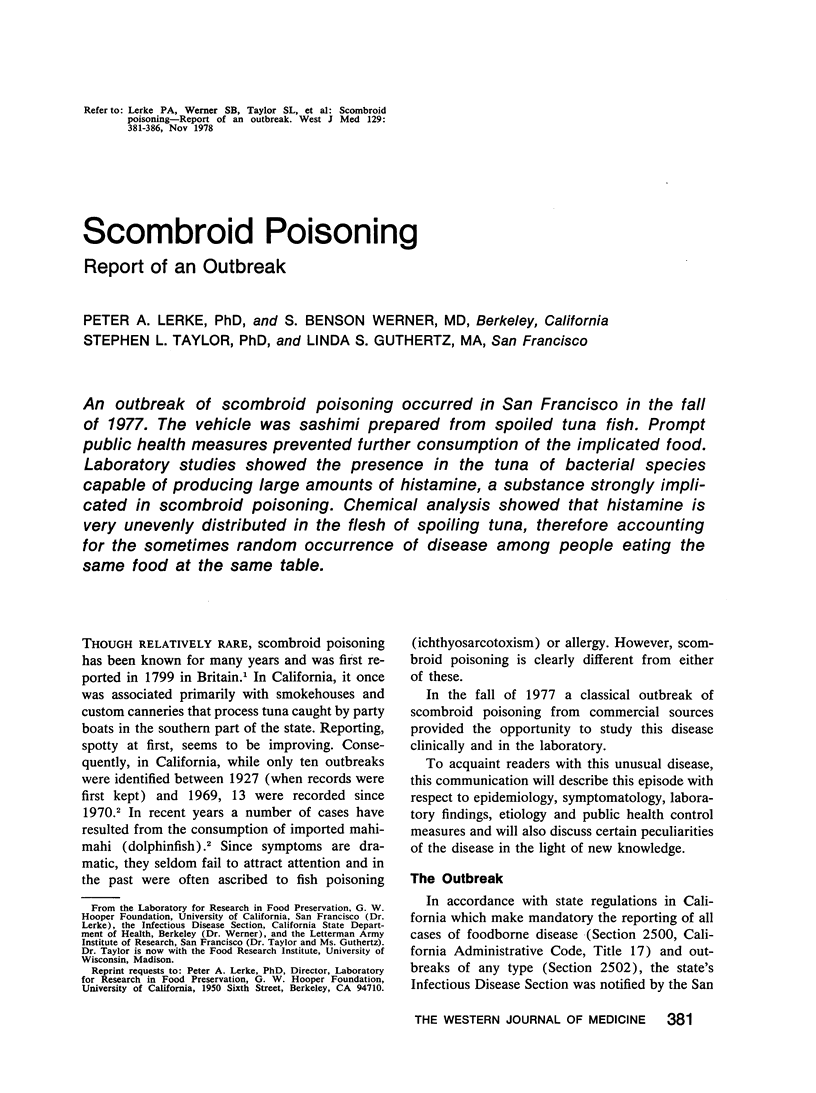
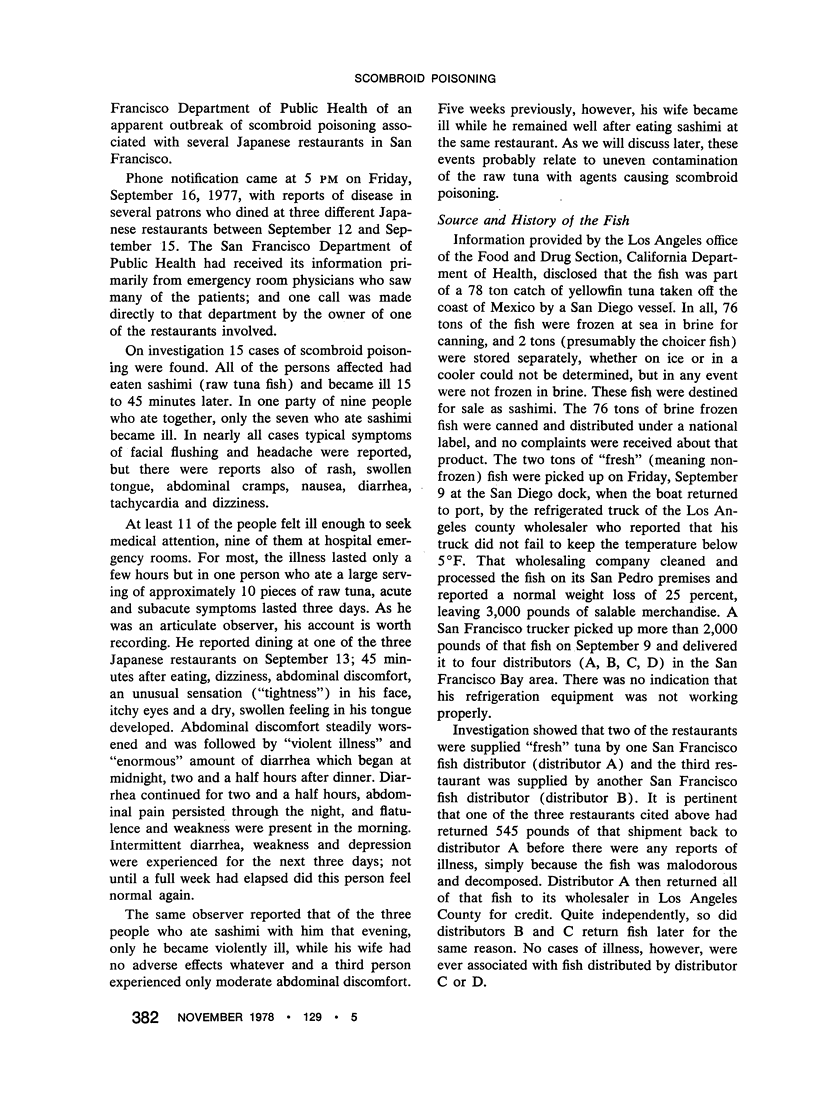
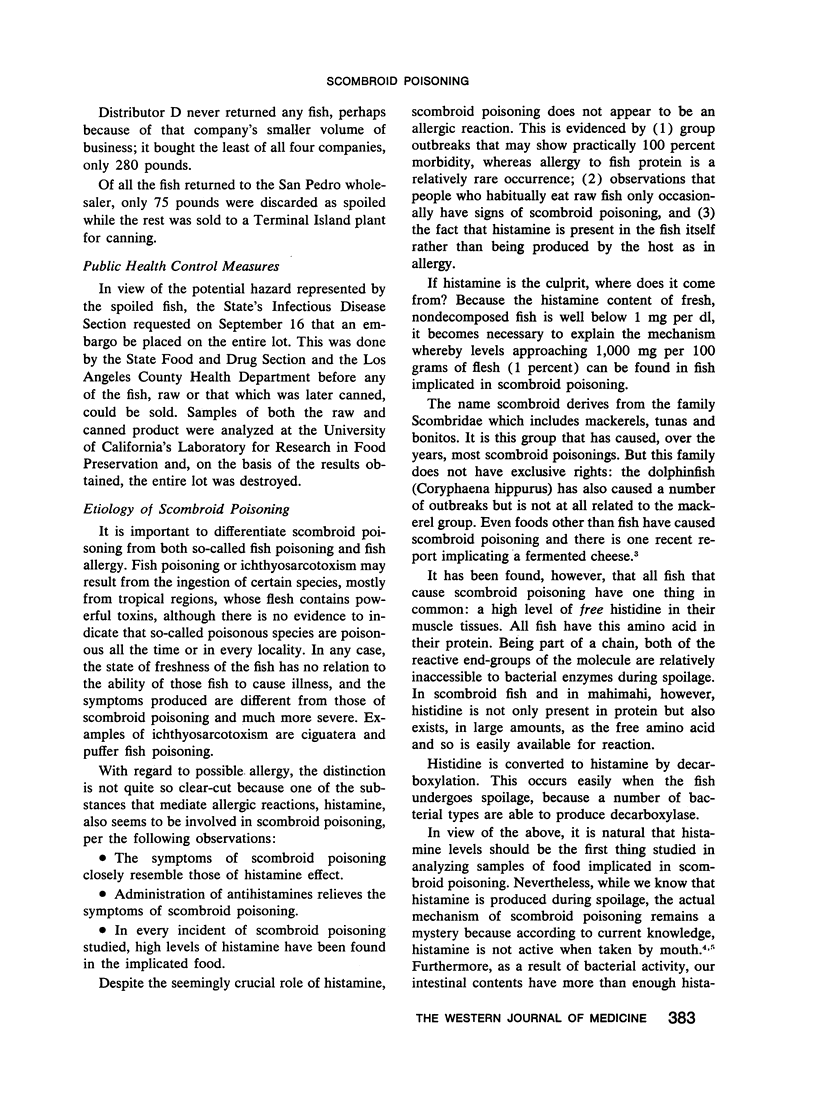
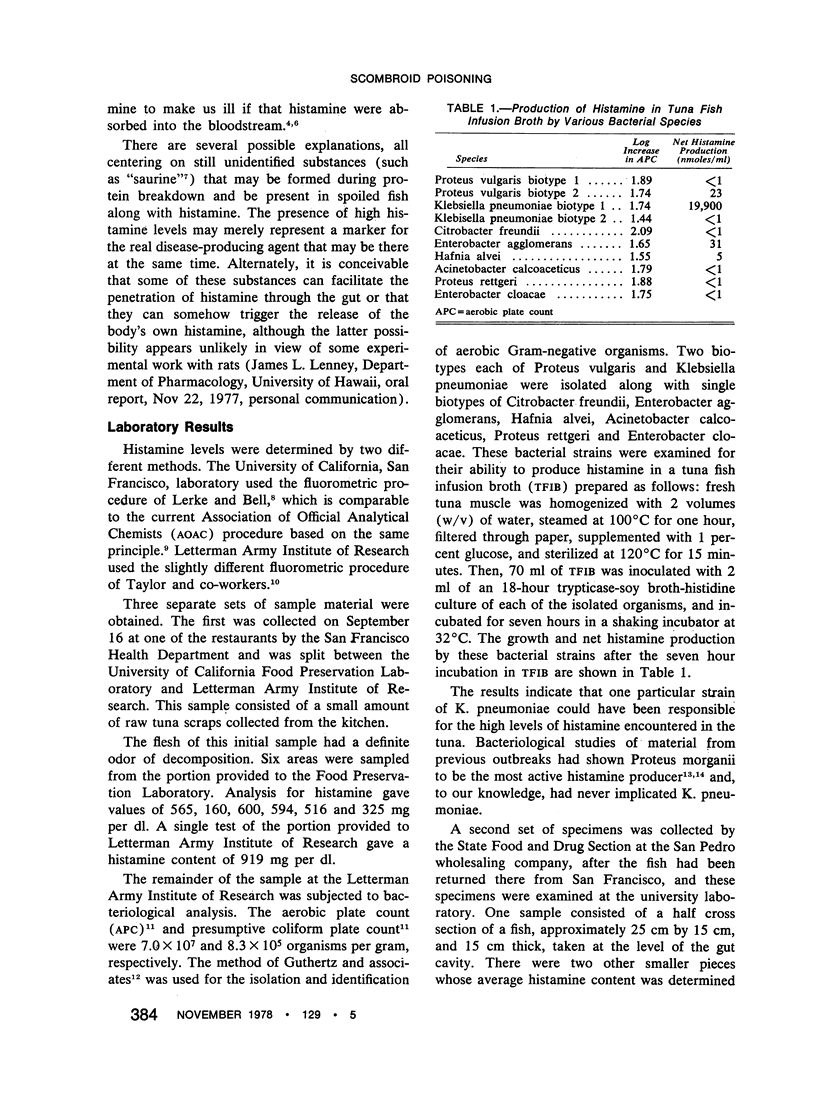

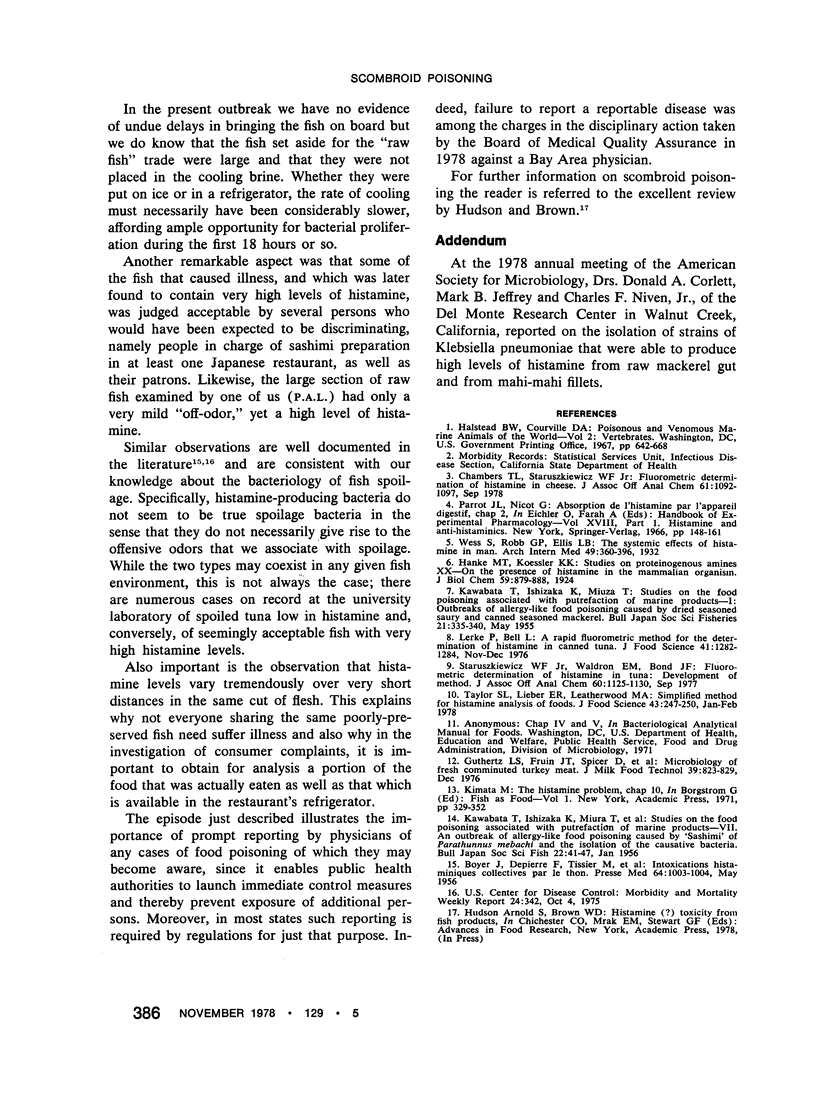
Selected References
These references are in PubMed. This may not be the complete list of references from this article.
- BOYER J., DEPIERRE F., TISSIER M., JACOB L. Intoxications histaminiques collectives par le thon. Presse Med. 1956 May 30;64(43):1003–1004. [PubMed] [Google Scholar]
- Chambers T. L., Staruszkiewicz W. F., Jr Fluorometric determination of histamine in cheese. J Assoc Off Anal Chem. 1978 Sep;61(5):1092–1097. [PubMed] [Google Scholar]
- Staruszkiewicz W. F., Jr, Waldron E. M., Bond J. F. Fluorometric determination of histamine in tuna: development of method. J Assoc Off Anal Chem. 1977 Sep;60(5):1125–1130. [PubMed] [Google Scholar]


